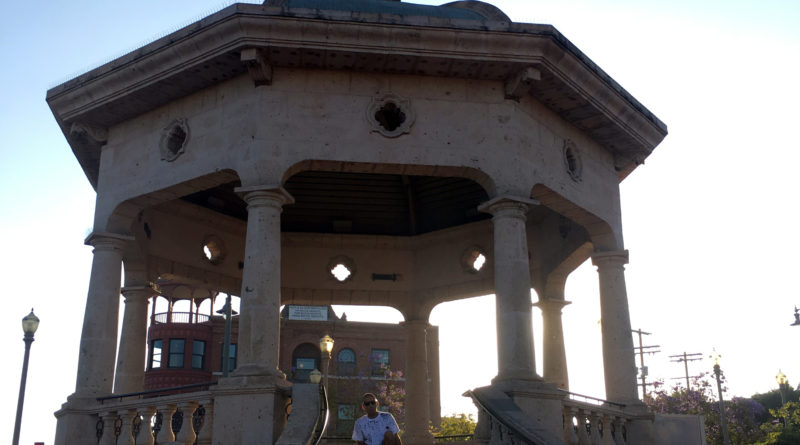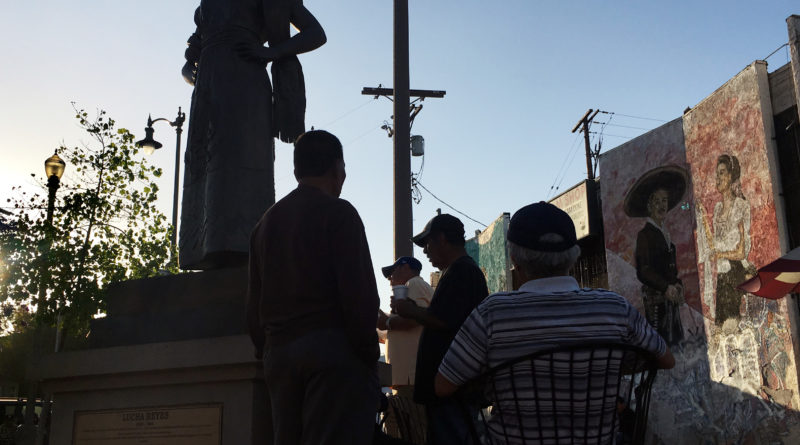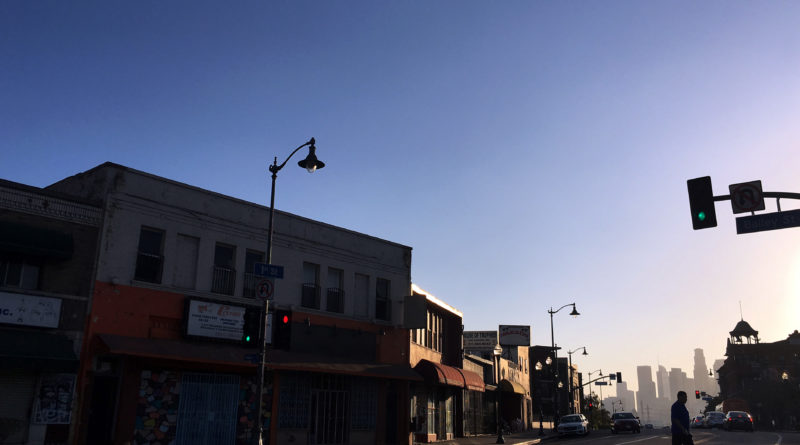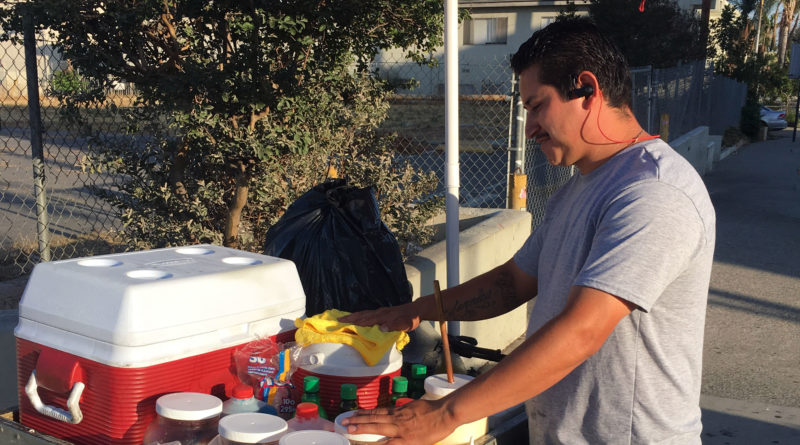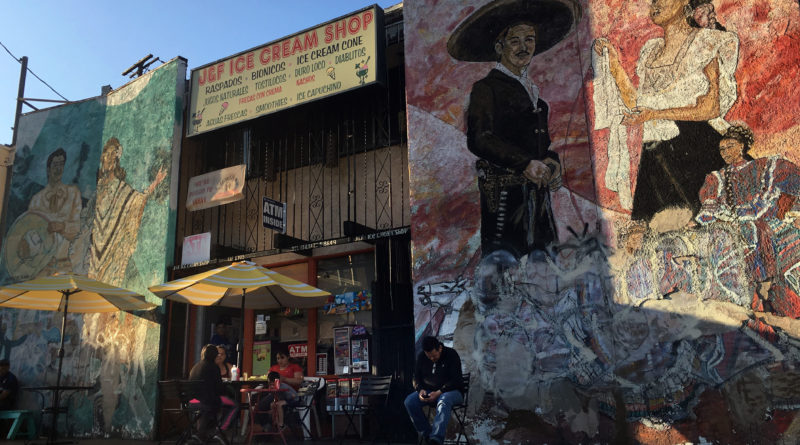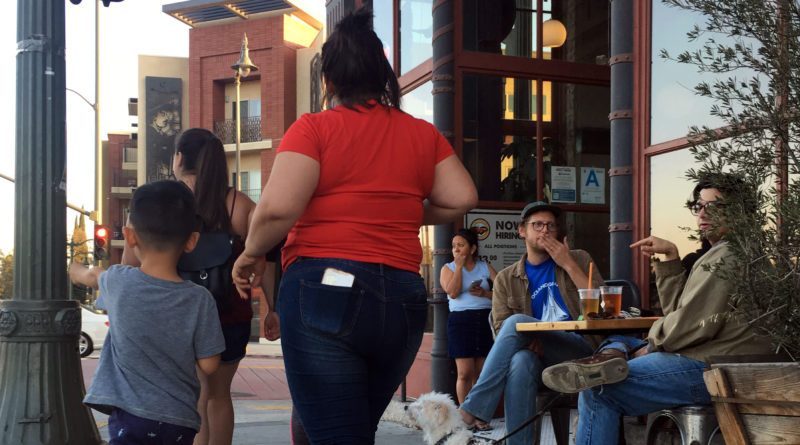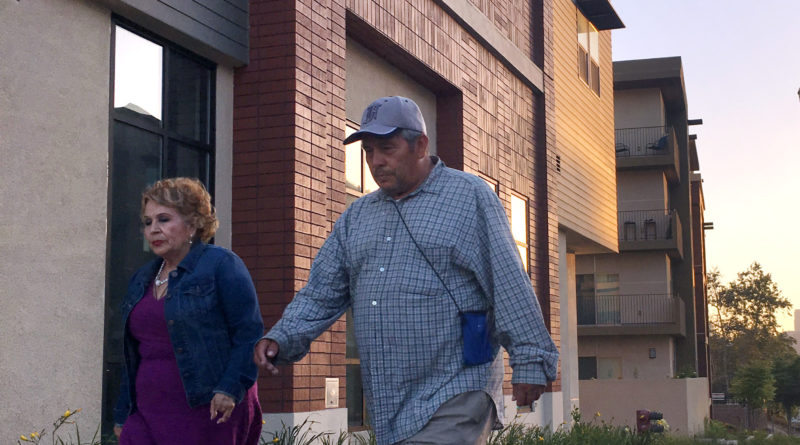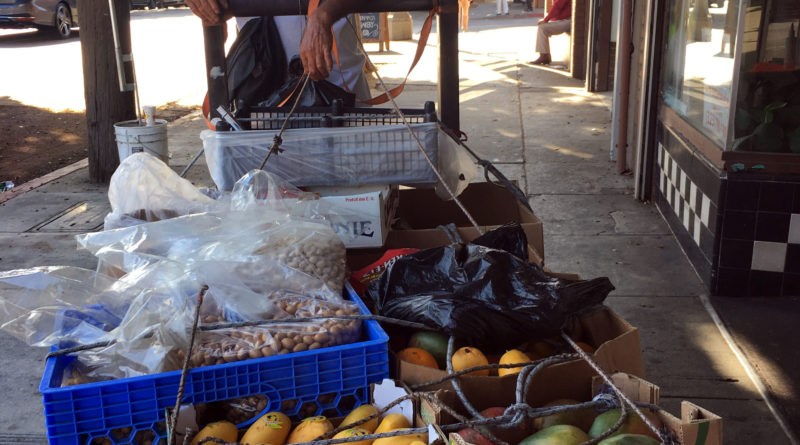From gentrification to gente-fication: Boyle Heights residents reclaim their neighorhood
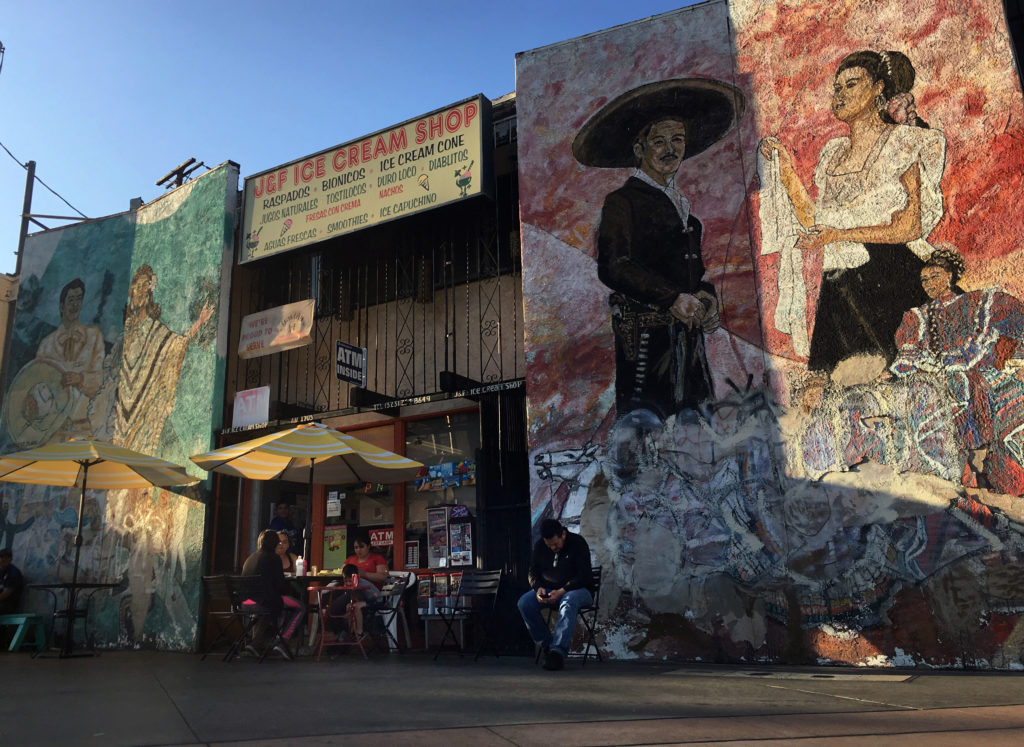
LOS ANGELES — Clustered under the shade of trees in Mariachi Plaza, several men chatted about their workday near J&F Ice Cream shop, while the distinctive sounds of gathering mariachis floated through the late evening air. Farther up the block, past fruit carts, paleteros and other street vendors, a young couple sipped their drinks outside a new coffee shop as other local residents walked by.
La Monarca Bakery, a new addition to the neighborhood, sits on the bottom floor of a renovated market-rate apartment complex that has been attracting young buyers and across the street from a complex built for low-income housing. The bakery targets local residents who are seeing their place in the neighborhood threatened by new money and new faces.
Abel Salas, editor and publisher of Brooklyn & Boyle, was one of many residents who has been pushed out of three rental homes since he moved to the area in 2000.
“I feel like I was gentrified,” Salas said. “I was also close to being homeless.”
Salas now lives in a two-bedroom apartment he has to share with a friend to afford the rent.
The Boyle Heights neighborhood of Los Angeles has become the latest landmark for the gentrification battle facing established ethnic neighborhoods in big cities nationwide. The renovating of old and construction of new shops and housing conforming to middle- and upper-class taste, seems like the inevitable bitter pill of progress, but it also has negative impacts on existing residents and businesses.
Most residents living in Boyle Heights are working-class Latinos who have been in the neighborhood for generations. Some have roots in the area going back to before the Mexican-American War when California was part of Mexico.
In 2009, the Los Angeles Metro opened a stop in Boyle Heights, which Josefina Lopez, artist director and co-owner of CASA FINA Restaurant and Cantina, says worsened the impact of gentrification.
“We thought it would make things great to connect us to the rest of the city but it made all these people move in.” In order to build the rails, families and homes had to be displaced. According to the documentary City Rising, the Los Angeles County Metropolitan Transportation Authority bought additional land at Mariachi Plaza, with plans to redevelop it as a commercial center which included no plans for affordable housing.
Community members did not feel like they were included in the project. Following community fallout, Metro has established the Boyle Heights Design Review Advisory Committee to represent the stakeholders regarding the Joint Development project. The group consists of a mixture of 14 community members, including commercial property owners and residents.
The purpose of the committee is to educate Metro on issues important to residents or those who work in the Boyle Heights project area. Multiple proposed projects are on the table at the Mariachi Plaza Station including 60 affordable apartments, 6,000 square-foot community garden, and a 2,035 square-foot Mariachi Cultural Center.
Despite that victory, some residents still feel like other changes will be moving faster. “USC is going to expand their hospital. They are trying to get rid of a lot people,” says Lopez. “They can’t just come into this neighborhood and not give, they also have to help out the community in some way. Maybe with certain jobs.”
Lopez, who was born in Mexico and grew up in Boyle Heights, has seen the change in the community. Other business owners say inspectors come in to their building and make it difficult for them to continue to run their business by issuing citations and eventually kicking people out.
Historical legacies of racism and capitalism are the foundation of neighborhood gentrification, and the reason working-class residents are pushed out of some of the last affordable communities in Southern California. Redlining, the practice of denying or limiting financial services to certain racial or ethnic groups, was one of the tools used to move people.
Boyle Heights was affected by redlining because residents’ salaries rarely rise above lower middle class levels. According to the Census Reporter, the community has a median income is $35,000. Some families earn as little as $17,000, which is under the national poverty line. Between 2010-2016, the median rent in Boyle Heights increased by $800. Most buildings in LA constructed after 1974 are not eligible for rent control restrictions, meaning that landlords can increase the price of units at any time.
“When you’re a working class person, you’re forced to live in a neighborhood where there’s a lot of violence, nobody wants to live there.” said Josefina Lopez. “When you fix your neighborhood and you make it a nice neighborhood, people want to live there and (long-time residents) get kicked out.”
Roberto Garcia, a community organizer from East LA Community Corporation, says that the alternative is ‘gentefication’, which maintains the community’s cultural roots during neighborhood improvements. Gentefication emphasizes renovations and new construction done for the benefit of existing residents, providing jobs, housing and other economic opportunity.
Garcia was sitting in La Monarca, a cafe that was described by the LA Times as “an upscale Mexican cafe and panaderia.” The new cafe was built in 2014, across the street from Mariachi Plaza, with owners choosing to honor the neighborhood’s culture.
The menu reads like a Mexican abuelita’s home-cooked repertoire: traditional goodies like pan dulce, tacos and tortas as well as fusion food like quiche ranchero and vegetarian chorizo. A push and pull between the old and new. Just like the neighborhood.
Email: latinoreporterofficial@gmail.com
Twitter: @karenorduna143
